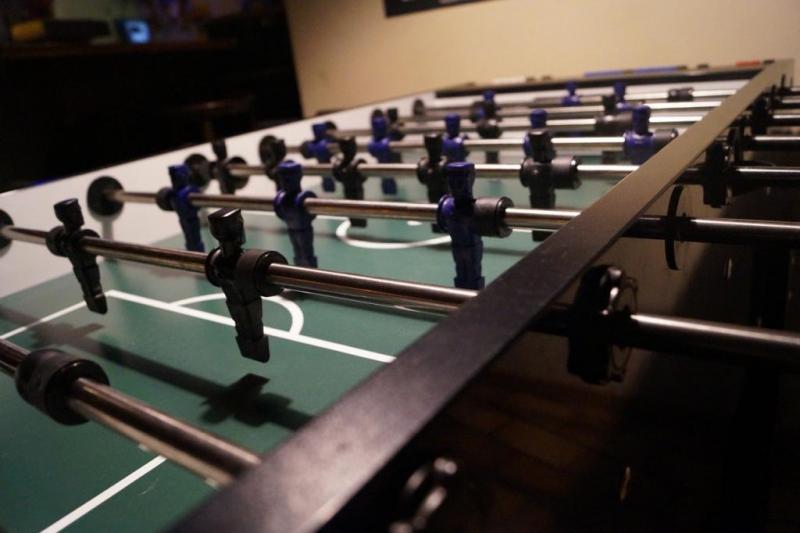Picture this: the fraternity’s annual foosball championship is next month and the trusted, well-loved chapter foosball table is officially on its last (literal) leg. After one too many after class tournaments, heated rivalry rematches, and passionate plays, it is time to say goodbye to the foosball table.
In searching to replace the irreplaceable table, many questions start to surface. After all, this table has to withstand the test of time, next month’s tournaments, and brothers new and old. So, now the question is: how to choose a foosball table?
Here are some essential factors to consider when choosing the next foosball table for your fraternity.
Durability
As you can imagine, durability will be essential for a fraternity foosball table. With so many people using it and sometimes being overly passionate in their use, it has to be able to last and handle it. Durability comes in the form of material, typically wood and MDF particle board. The type of foosball material used can make the difference on whether players on the field suddenly go missing or handles break off.
Table Top Versus Freestanding
Typically, foosball tables are pictured as freestanding on four legs. There are plenty of models that can be moved around and set on tables. They tend to be smaller but can be stowed away easier than a freestanding model. For a serious foosball user, freestanding will be the better option. For a more portable, easier to protect option, consider a tabletop version.
Goalie Notes
In comparing foosball tables, you might notice there are some single-man goalies and others are three-man goalies. In the U.S., it is normally three-man and in the U.K., it is single-man goalies. Choosing between the options is a matter of preference. Three man options tend to create a fast-paced game. One-man options require more skill and precision. Single-man tables will help improve an individual’s skill. Some higher-end foosball tables will be able to be converted between one and three-man goalie setups.
Consider Counter-Weighted Players
Counter-weighted players on a table bring in a feature that pros use. These types of players stay horizontal when released so they don’t interfere when taking a shot. Overall, counter-weighted players lead to a better game. These types of players do also lead to a more expensive table, but it might be worth the investment.
Rod Material
As a rule of thumb, playing rods should be steel. Hollow steel rods will lead to a faster game since the rods aren’t as heavy. Most high-end tables use hollow steel rods. Mid-level tables will have solid steel rods. There’s nothing wrong with solid steel, but don’t expect as many thrilling super shots with the increase in weight.
Price Point
Even when investing on behalf of so many members, the chapter has to consider the cost of a new foosball table. Depending on the chapter’s level of commitment to foosball, you can expect a range of pricing options. For an intermediate table with good construction, flat surface, and maybe a few features, you can expect to pay $500 or less. A more advanced option will be more durable and definitely last the longest with plenty of features. Some of these more advanced, professional options can easily push $1000.
Read the Reviews
Just like with course reviews and professor ratings, reading the reviews on foosball tables is important in the shopping process. Reviews from customers and experts can give the insight necessary to make a good choice. Reviews can sometimes be skewed one way or another based on the experience, so don’t just read the first review that pops up.
Do you feel more prepared to find the right foosball table? Get to searching and make the choice soon so the fraternity can get back to foosball!

